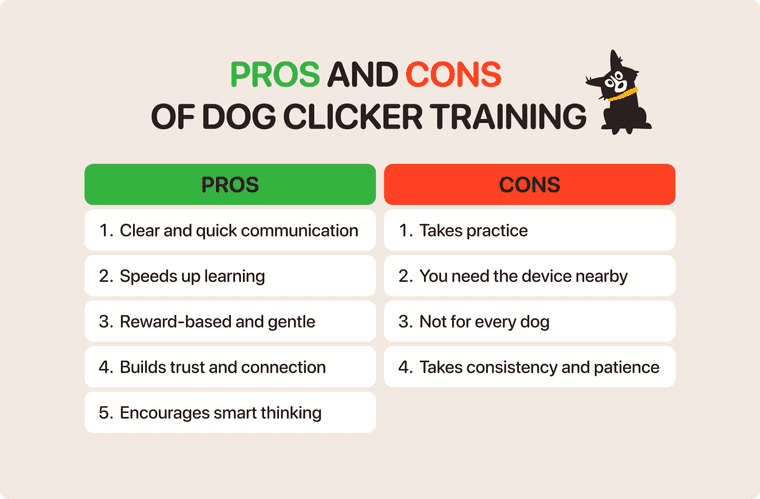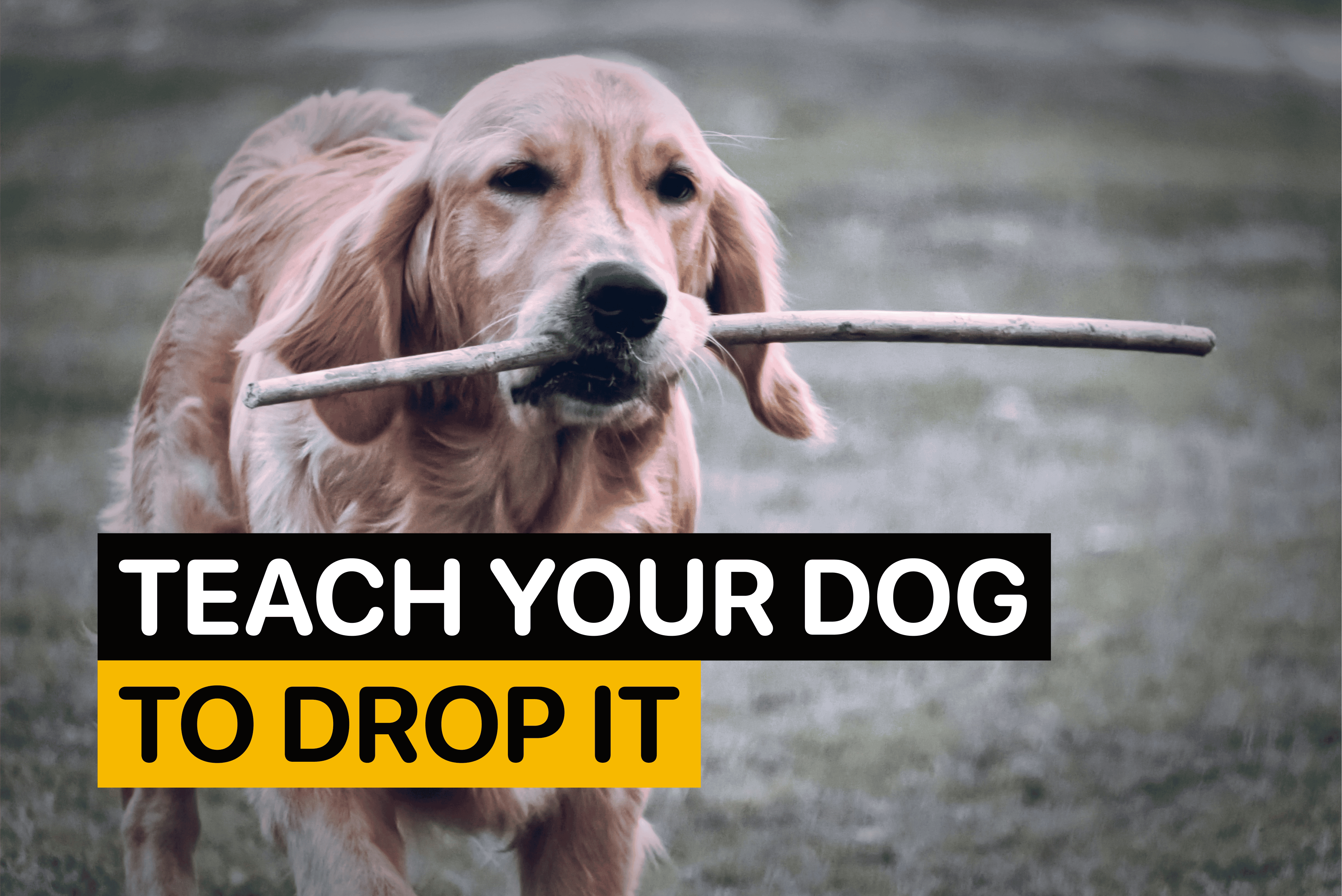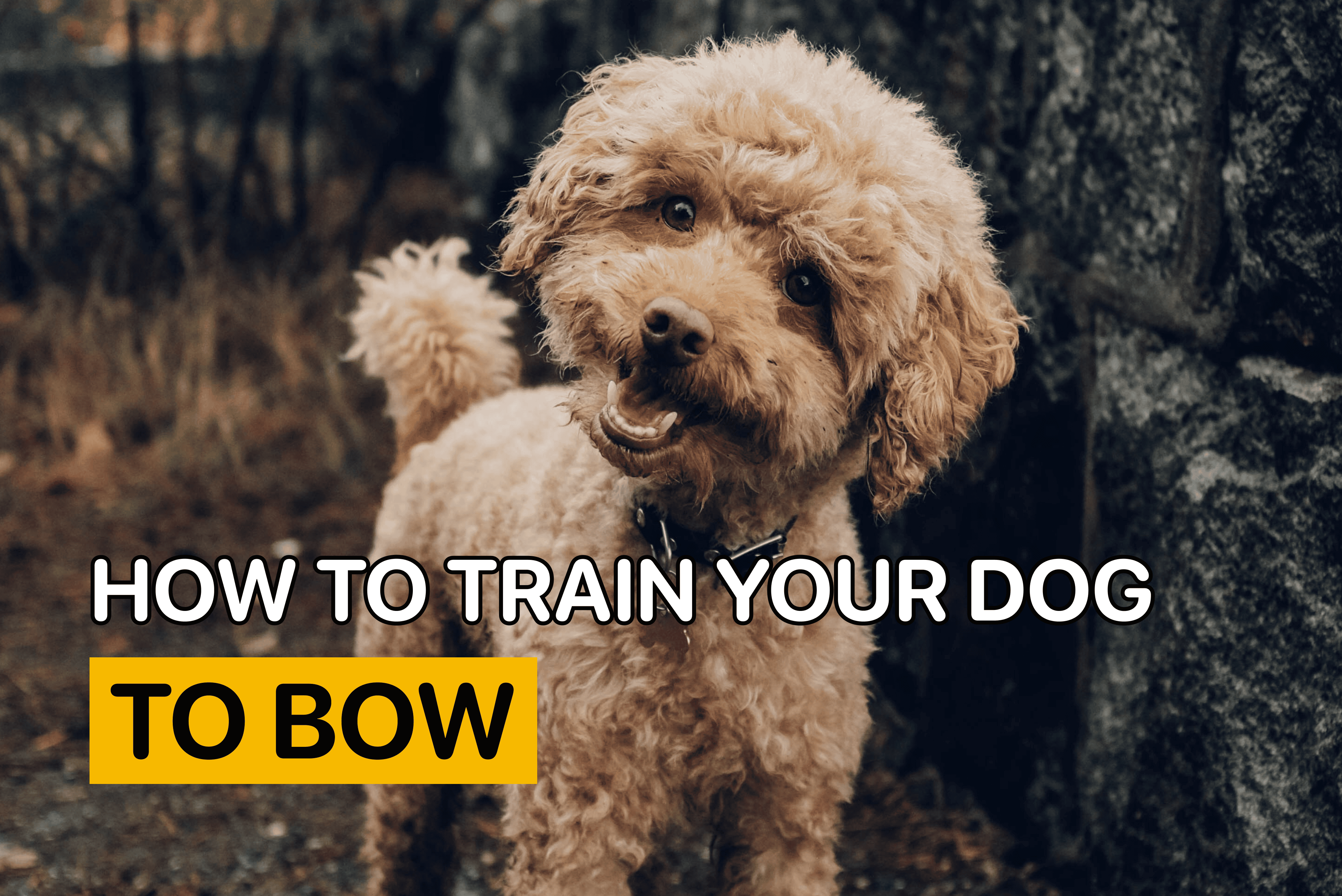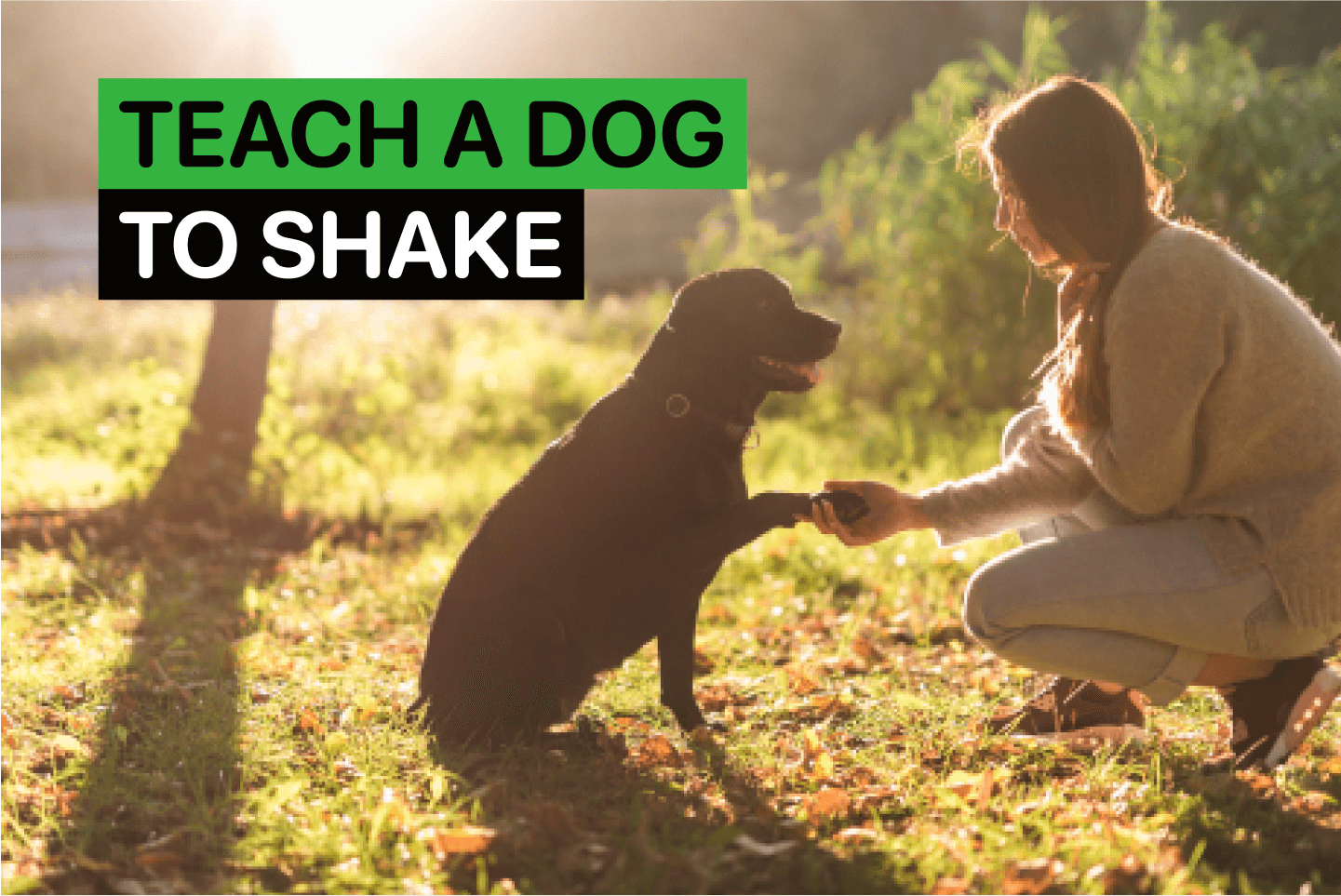How to Use a Clicker to Train a Dog?

By
Woofz Team Updated on |Reviewed by Annie-Mae Levy
Dog clicker training isn't just another training manual - it's your VIP invitation to build trust, boost communication, and celebrate every small victory with your furry companion.
Whether you're welcoming a new pup or looking to strengthen the bond with your longtime friend, this guide offers practical tools for clicker training dogs for beginners, pro pet parents, and dog clicker training pros and cons. We bet you’ll enjoy clicker training, so let’s dive in!
What is Clicker Training for Dogs?
It’s a positive, science-proven method (based on operant conditioning) that uses a small device – called a clicker – to mark the exact moment your pup performs particular behaviors. That “click” sound acts as a signal that a reward is on its way, helping your furry friend understand what they did right.
Using a clicker for dog training can help dog owners build confidence, strengthen their relationship, and turn learning into a fun, rewarding experience. Whether you're teaching basic commands or advanced tricks, dog clicker training offers a gentle, effective way to communicate and connect with your furry friend.
Why Use a Clicker for Dog Training?
A great question! Using this device is a simple and enjoyable way to teach your pup new behavior. It works by using the click sound to tell your companion, “Yes, that’s right!” Then follow with a treat.

Studies show that canines learn faster with a clicker than with voice commands (like “Good Dog”). The click gives clear, instant feedback, so your dog associates and knows exactly what they did right and can repeat the behavior more easily.
Curious About Clicker Training?
Clicker training is a simple, strengthens communication and makes learning a game your dog actually enjoys!
Try our Clicker Training
Dog Training With Clicker: Pros and Cons
We’ve compiled a comparison table of dog clicker training pros and cons, so you don’t have to spend time researching a ton of info before your training sessions.
Pros
- Clear and quick communication. The click sound is consistent and unemotional, so your dog gets a very clear signal: "Yes! That’s what I wanted!" No guessing, no mixed signals.
- Speeds up learning. Because the timing is so exact, your dog connects the desirable behavior with the reward more easily, which speeds up training.
- Reward-based and gentle. No need for yelling or punishment. You’re rewarding good behavior, so training becomes a fun bonding experience.
- Builds trust and connection. Makes training feel like teamwork.
- Encourages smart thinking. Dogs learn to offer good behaviors on their own.
Cons
- Takes practice. Timing the click just right can be tricky at first.
- You need the clicker nearby. It can be inconvenient if you forget it.
- Not for every dog. Some dogs might find the clicking noise startling.
- Takes consistency and patience. Works best when used regularly and correctly.

How Does a Dog Clicker Work?
1. Click Sound When your dog performs desired behaviors, like sitting or staying, you click the clicker.

2. Reward Right after the click, the dog gets a reward, usually a food treat. Timing is crucial, as the reward follows the click almost immediately.
3. Association Over time, the dog associates the click sound with the reward. The click signals that the behavior is correct and leads to a reward.
4. Consistency Consistently using the clicker helps shape and reinforce various behaviors, allowing precise communication between you and your dog.
My least favorite part of clicker training is the fact I never have one with me! Clickers are great for learning new skills with younger dogs or new rescues, but once you get outside, you will often forget to bring it with you or struggle to find it in pockets, and here, a verbal marker "Yes" can work better.
How to Use a Clicker for Dog Training?
You can teach your dog to understand the clicker sound before teaching any other commands.
Here are two most common training methods.
Method 1: Capturing
Try asking for behaviors your dog already knows (if any!) and then clicking when they perform the behavior.
If your dog doesn't know any behaviors, you can simply wait and watch them. Eventually, they will sit or lie down, and you can click and then feed them for this behavior!

Method 2
- Grab a clicker and some treats
- Click about 10-20 times in a row and deliver a treat each time after the sound
- Make sure your dog’s attention is on you the whole time
- Try teaching commands with a clicker
Note: How can you understand that the dog is responding to a clicker? If you click when the dog is distracted or looking away from you, and they immediately respond by coming to you and looking for their treat, then this means they understand the clicker.
Tips for Successful Clicker Training
- Aim to have a 1–2 second gap between clicking and feeding your dog.
- Use their favorite treats to make these moments more memorable.
- Keep practice sessions short and fun. Aim for 5–10 minute training sessions to keep your dog focused and prevent boredom.
Woofz tip: When you buy one, get a few of the same clicker - they all sound a bit different, and you’ll likely lose one!
When Can You Start Clicker Training a Puppy?
You can begin clicker training your puppy at 8 weeks old. You must have noticed that at this age, your puppy is getting extra curious and very eager to explore the world around them. But don’t forget that every puppy is different, and factors like age, breed, personality, or even gender can influence how quickly they learn a new skill.
When introducing clicker training, be patient with your puppy. Progress may not always be visible at once, so don’t worry and continue your small movements to the goal! That’s perfectly normal.
Stay positive, lower your expectations, celebrate small wins, and use the device and treats to reinforce new behavior. With time and encouragement, your puppy will start understanding what’s expected and feel more confident in their learning journey.
It’s a Wrap
The benefits of clicker training are numerous, including a positive reinforcement approach for building a strong bond. From basic commands to advanced tricks, the versatility of this method is emphasized as an effective and humane method for shaping desired behaviors. This is a fun and effective tool for helping your pup to earn good behavior and feel happy!







